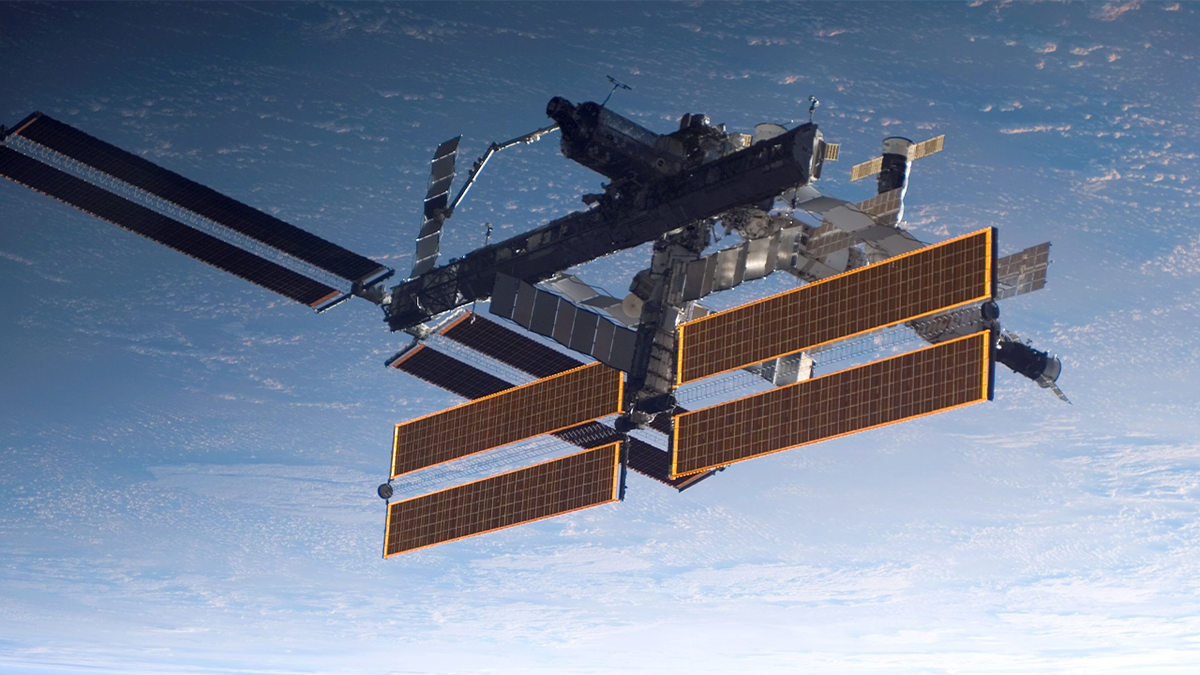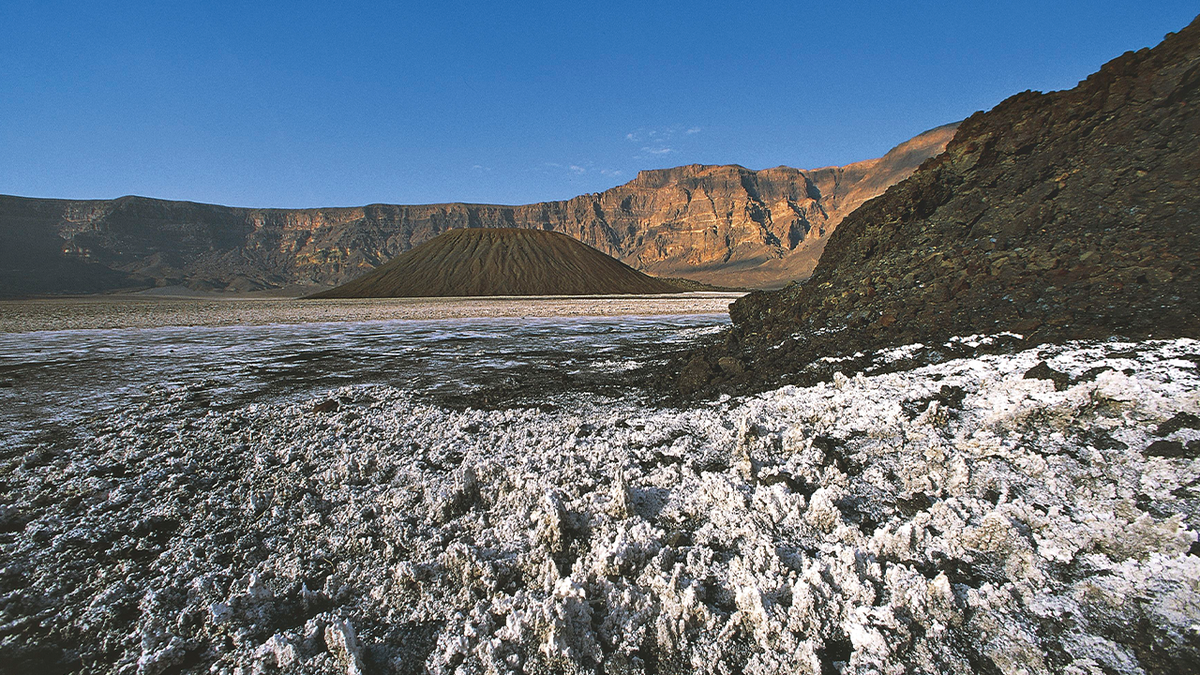NASA’s Perseverance rover on Mars captures dust devil
The Mars rover Perseverance captured a dust devil moving across the rim of a crater. Credit: NASA
In a remote area of the Sahara desert sits a 3,000-foot deep volcanic pit that looks like a ghoulish skull when viewed by space, NASA photos show.
The NASA Earth Observatory said last week an astronaut aboard the International Space Station spotted the odd formation in the Tibesti Mountains in the Republic of Chad. The photos were originally taken in February of this year, and later re-shared by NASA.
"The 1,000-meter (3,300-foot) deep volcanic pit and soda lake Trou au Natron in northern Chad has the look of a ghostly face staring back at you," the NASA Earth Observatory said in a blog post last week.
NASA SURPRISED TO DISCOVER 'DINKY' MOON ORBITING ASTEROID IN CLOSE FLYBY

The deep volcanic pit and soda lake, Trou au Natron, in northern Chad that appears to look like a skull from space. (NASA Earth Observatory )
The photos show what appears to be a massive skull formation, with two eye sockets and a nose surrounded by a white material that builds out the appearance of a skull. NASA said the eye sockets and nose are actually "cinder cones—steep conical hills built around volcanic vents," while the white material is "a mineral crust made of a salt known as natron."
NASA SPACECRAFT CATCHES ‘EERIE FACE’ ON JUPITER

In this handout photo provided by NASA, the International Space Station is seen over a blue and white Earth, taken shortly after the Space Shuttle Atlantis undocked from the orbital outpost. (NASA via Getty Images)
The Tibesti Mountains are considered one of the most remote and isolated areas of the world, which has made researching Trou au Natron difficult for scientists.
NASA PUBLISHES NEVER-BEFORE-SEEN PHOTOS OF 'RAVIOLI' MOON ORBITING SATURN

Salt deposits around the caldera of Trou au Natron, Tibesti Region, Chad. (Getty Images )
NASA did say that research indicates the area was filled with a glacial lake roughly 14,000 years ago, and samples of fossilized aquatic algae collected in 2015 dates back an estimated 120,000 years.

An astronaut on the International Space Station snapped this shot of Trou au Natron, in northern Chad that looks like a skull from space. (NASA Earth Observatory )
Last month NASA released images showing another "eerie face" that was captured when the Juno space probe passed Jupiter.
"The image shows turbulent clouds and storms along Jupiter’s terminator, the dividing line between the day and night sides of the planet," a description of the image reads. "The low angle of sunlight highlights the complex topography of features in this region, which scientists have studied to better understand the processes playing out in Jupiter’s atmosphere."

The face (pictured here) appears to have eyes, a nose and a mouth. (NASA/JPL-Caltech/SwRI/MSSS)
NASA said that people spotting faces in space images is a case of pareidolia, defined as "the effect that causes observers to perceive faces or other patterns in largely random patterns."
Fox News Digital’s Michael Lee contributed to this report.


